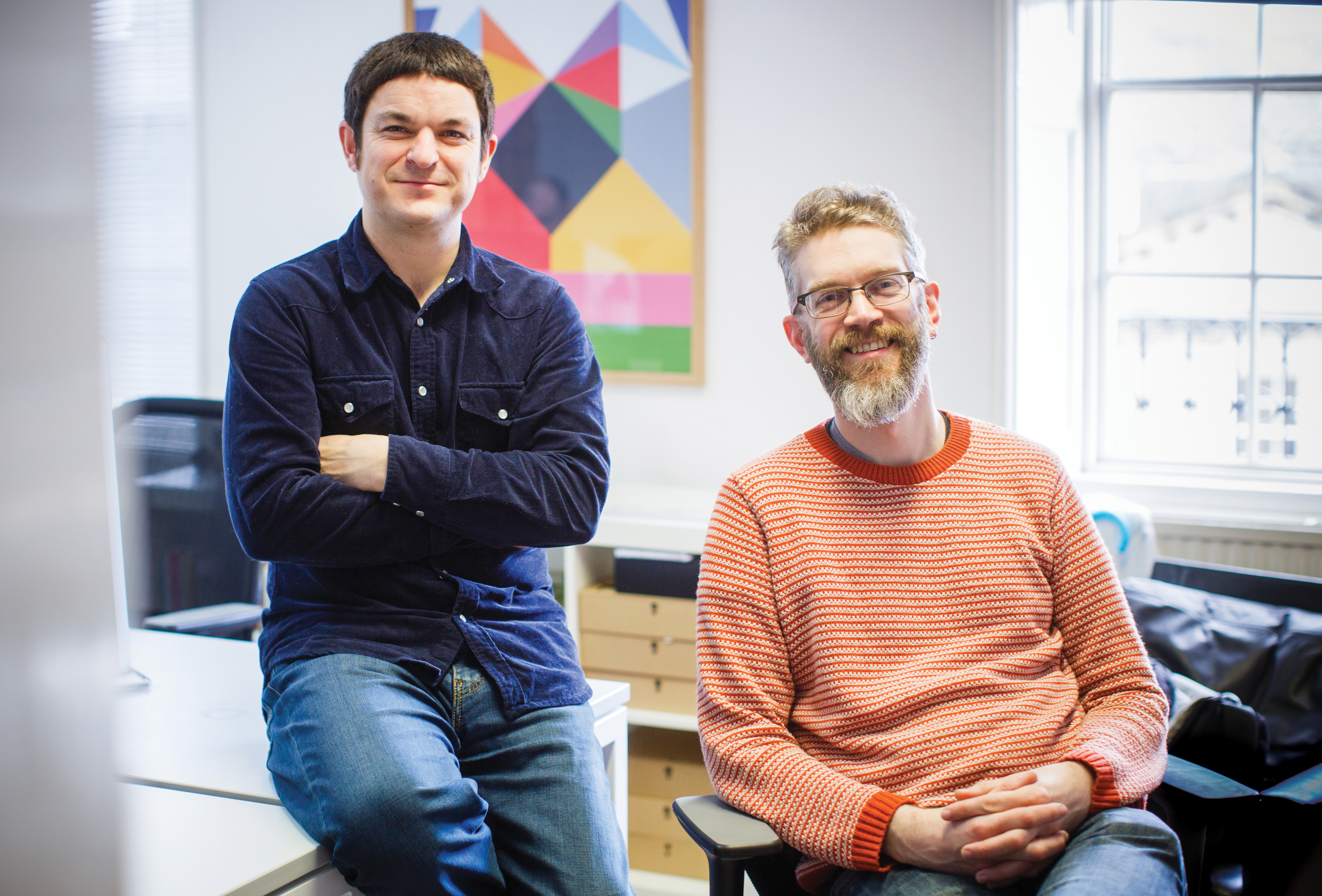The Freelance Rates Calculator uncovered
Cole Henley is probably best known for his Freelance Rates Calculator. You may also know him as technical director for award-winning web design agency Mud, which he co-founded with Matt Powell in 2013.
Although he studied archaeology at university, he'd always been interested in the possibilities of the web. “Rather than having this linear narrative, it meant the reader could explore different kinds of stories, ” he enthuses. “This really inspired me.” So he taught himself web design and worked on a number of self-initiated projects, including a social network for archaeologists called Digs Reunited.

It was a few years before he decided to switch to web design full-time, and his first role wasn't quite what he'd hoped for. "I was literally the coder in the basement, coding away with no daylight."
To get a bit of human contact, he’d travel to conferences such as dConstruct in Brighton. “When I was there, I’d bump into friends from Edinburgh and have drinks. But it soon started to dawn on us that this was ridiculous: why weren’t we doing this in Edinburgh?” So they formed a small group that held meetups, and later, started to host talks.
Out of the basement
Through the group, Henley started making contacts, and finally made the leap into the private sector, working as a senior web designer for a web agency, Net Resources Ltd. “It was really full-on, ” he recalls. “It was my first time designing for a client and I really struggled at first. I didn’t have an artistic or design background, and I struggled with the difference between critique and criticism. I took a lot of client feedback personally.”
I put the word out on Twitter, Dribbble, Instagram that I was looking for work. And because of the networks I’d built up, I had six weeks of work lined up in under an hour
He soon found his stride, but then just two years later, in 2011, he arrived at work only to be told the company had gone into receivership. “And I thought: shit. I had a mortgage, two kids, and I started to panic a lot. I was desperate.”
Social media proved his lifeline. “I was using Twitter a lot, ” he says. “So I did a CV, put stuff out on Twitter, Dribbble, Instagram, trying to get the word out that I was looking for work. And because of the networks I’d built up, I had six weeks of work lined up in under an hour. Having built up those networks over time really saved my bacon.”
Daily design news, reviews, how-tos and more, as picked by the editors.
And so began Henley’s freelance career. But there was one problem: not knowing what to charge.
Freelance Rates Calculator
“When it came to setting my rates I had no idea what was realistic, ” he says. “And I quickly discovered it was the one thing people weren’t happy to talk about.” He approached friends directly, and found that a lot of them were willing to discuss the matter privately but not publicly. “And I thought: is there a way we can pool this resource? So I put together a Google spreadsheet and said: ‘This is entirely anonymous, fill it out, and I’ll try to do something with what comes back.’
“I asked: ‘What do you do? Where are you based? What do you charge?’ And the response was fantastic. This first year about 400 people responded. Statistically, that’s not a huge amount. But it was enough to start with.”
I wanted to create a very simple tool to give people confidence in what they were charging
At first, all Henley did was write a blog post summarising the data. But then later, he found himself in a hotel lobby in Belfast, recovering with friends after a heavy night out at the Build conference.
“I thought: I’m going to take this opportunity. I’m going to see what I can achieve in a few hours, knock together a little PHP application, put all the data in a MySQL database and just see what happens. That was the genesis of the freelance rate calculator. To take something that was interesting but not massively useful, and create a very simple tool to give people confidence in what they were charging.”
The app proved a huge hit, and generated a lot of attention for Henley. “The main benefit for me is hearing people say it’s given them confidence to up their rates, ” he explains. “A number of freelancers have told me: ‘Thank you. I was really struggling to tell my clients that I wanted up from £120 a day. But your calculator gave me the ability to ask for it’.”
How to charge
It has, though, also attracted some criticism for being too blunt a tool. For example, some agencies have been confronted by freelancers demanding rates based on the calculator that they simply can’t afford to pay. The issue, Henley believes, is that people have used the calculator in the wrong way. “It’s a broad tool, ” he stresses. “It’s a guidance rather than a recommendation.”

There are countless factors involved in the rate you should charge a specific company for a specific job, and the figure arrived at by the calculator should be a starting point rather than the final word. “For instance, very often if you have a good relationship with an agency, you get repeat work, ” Henley points out. “So there’s a mutual interest in lowering your rates because you’re getting a regular income.”
In short, you shouldn’t use the calculator as ‘evidence’ in negotiations, as this will probably just rub your contractor up the wrong way. Instead, its aim is to give you the confidence to ask for a rate that you feel is reasonable.
Mental health
Henley's career rapidly took off, but while his freelance job was fulfilling, he found that career success doesn’t always go hand-in-hand with happiness. It's a subject he’s since talked about openly at events.
“What I found with freelancing, in hindsight, I was starting to get in a depressive cycle , ” he explains. “I was being quite self-destructive with the workload I took on. I never had to chase work, it just seemed to come to me. But I was struggling to get things finished.
With freelancing, I was starting to get in a depressive cycle. I was being self-destructive with the workload I took on
“I’d get 60 per cent through a project and then get excited about something new and switch attention. To be honest, I was letting a lot of people down, and in hindsight that was due to depression.”
“I don’t think this is unique to our profession , ” he notes. “But I think what you can say is we’re quite open to talking about stuff. In web design, it’s all about sharing and openness, and people helping each other out. That’s gone right through my web design career.”
Our name is Mud
In 2012, Henley moved to Somerset and met Matt Powell through a local Dad’s Geek Club. “We were both working with ExpressionEngine, we got on personally and had similar values, ” Henley explains. “So the idea of forming a company seemed like a no-brainer.” That company is Mud, and it’s been quite the success.

“Now we’re eight employees, trying to get a ninth.” Their client base is an interesting one, Henley explains. “Half of our work comes from our own clients, and for the other half, we’ve developed a strong working relationship with a number of design agencies that don’t have a technical team, ” he says.
“It’s been a very happy marriage, because they really value that we understand design. The ability to articulate a visual design language and in code is something we are very good at, ” he believes. “And because we have that, clients trust us.”
This article was originally published in net magazine issue 296. Subscribe now.
Related articles:

Tom May is an award-winning journalist specialising in art, design, photography and technology. His latest book, The 50 Greatest Designers (Arcturus Publishing), was published this June. He's also author of Great TED Talks: Creativity (Pavilion Books). Tom was previously editor of Professional Photography magazine, associate editor at Creative Bloq, and deputy editor at net magazine.
